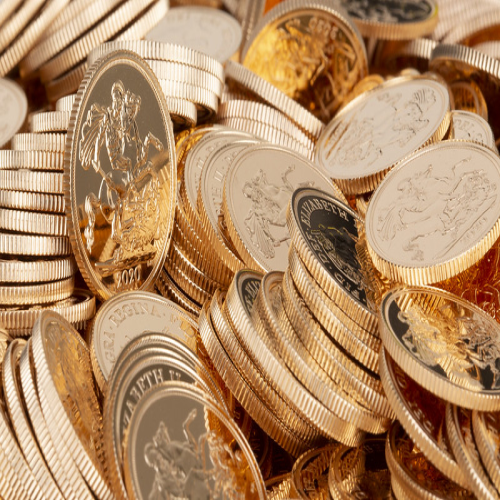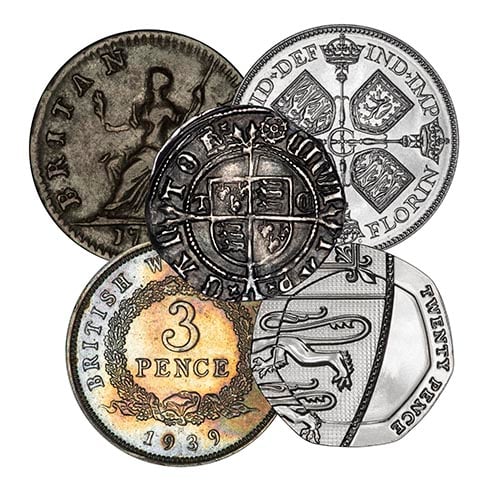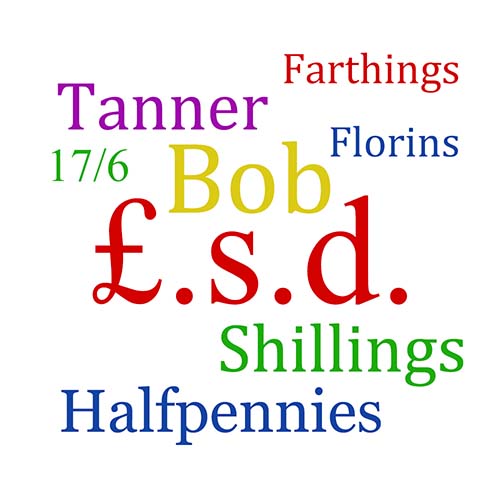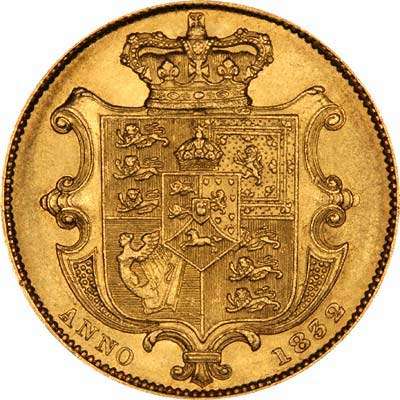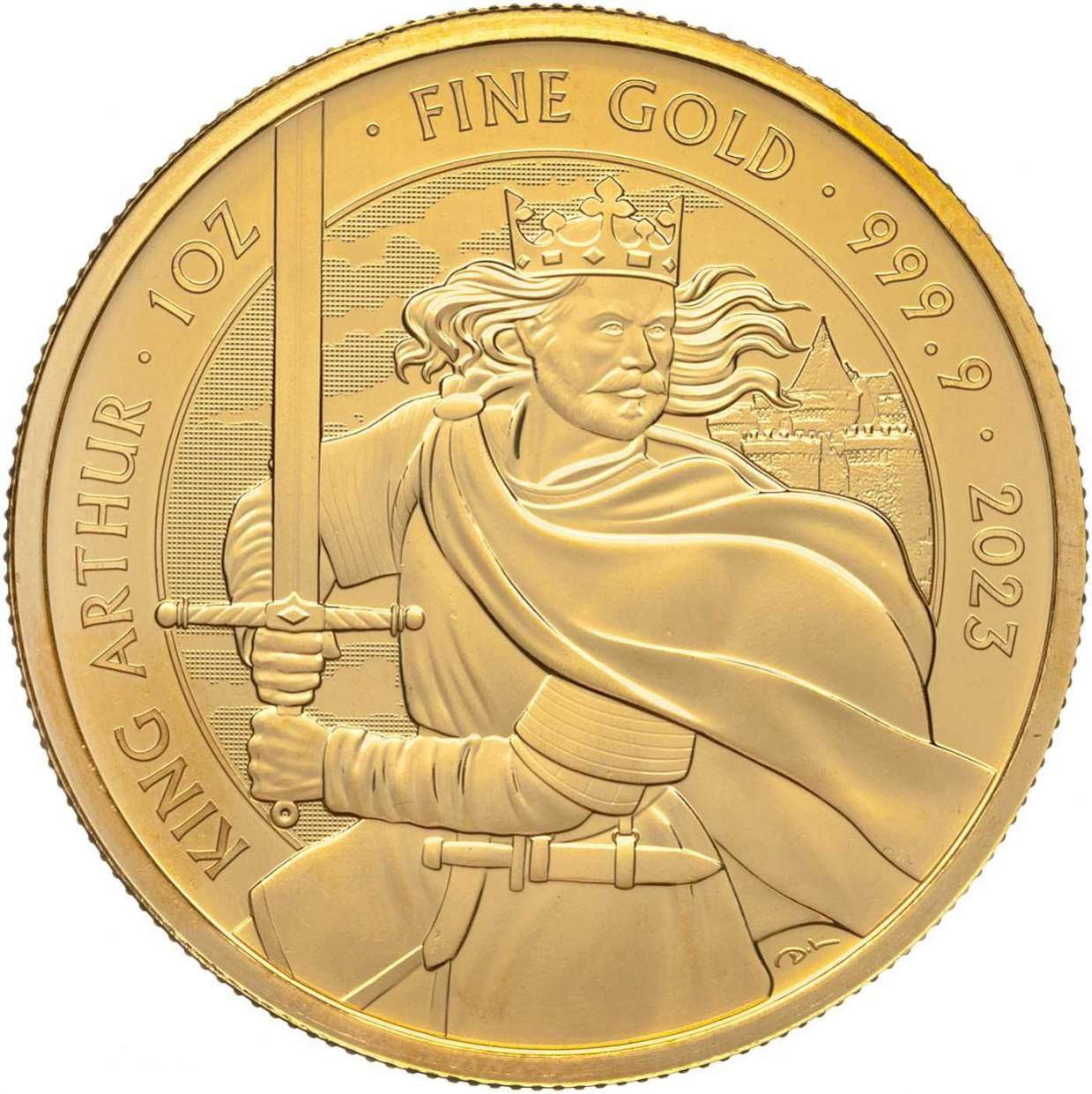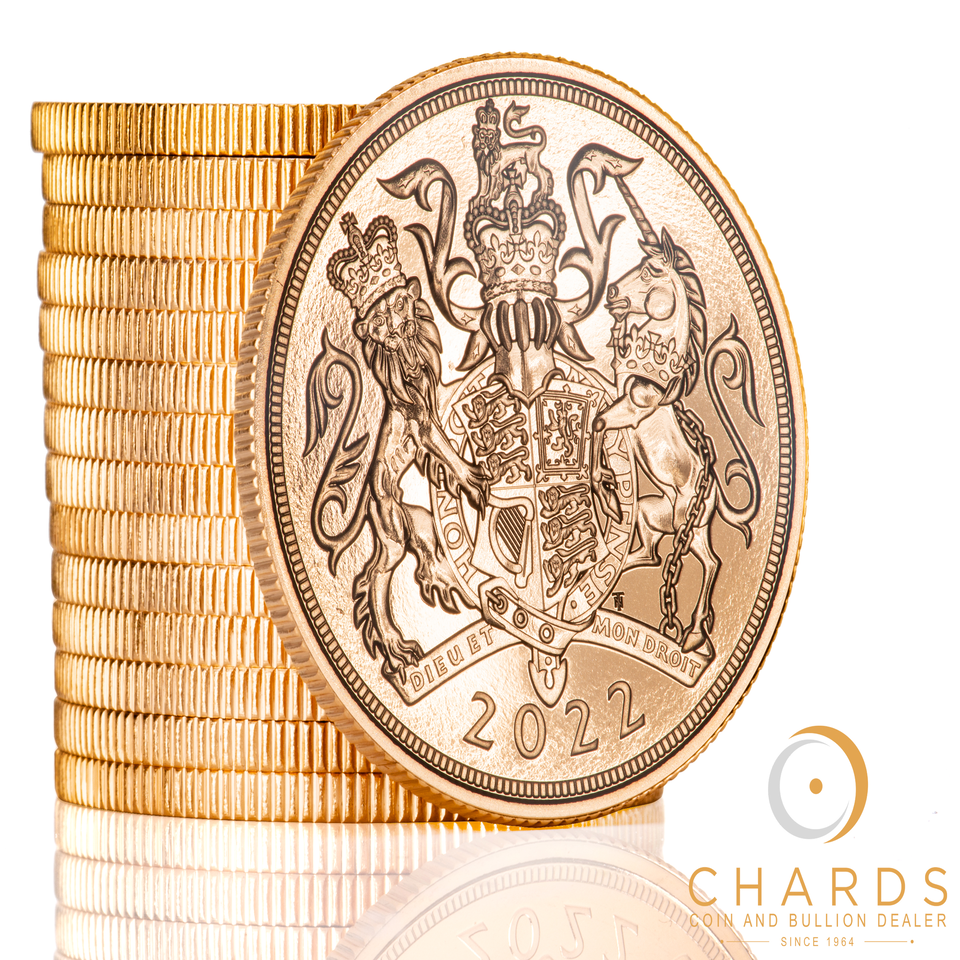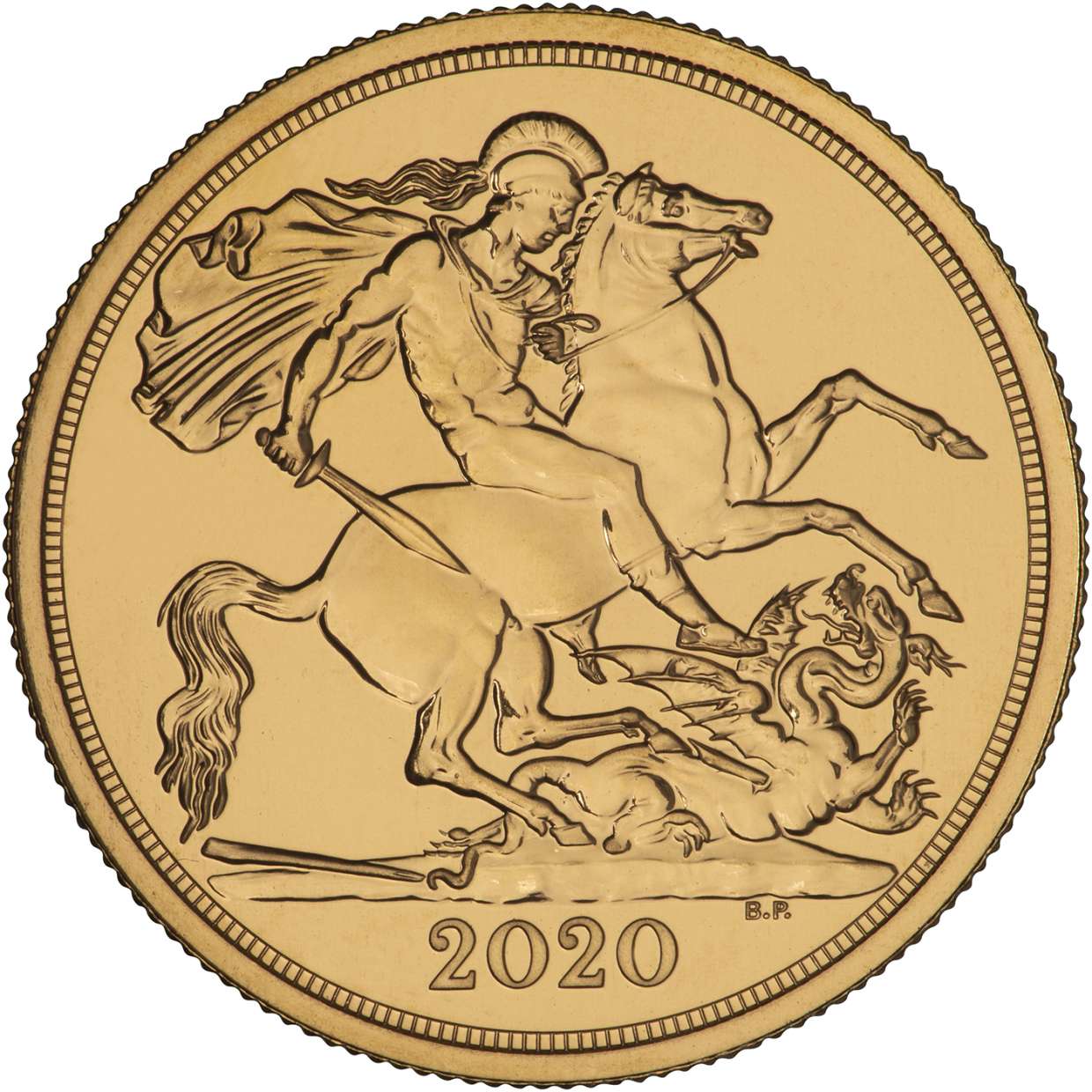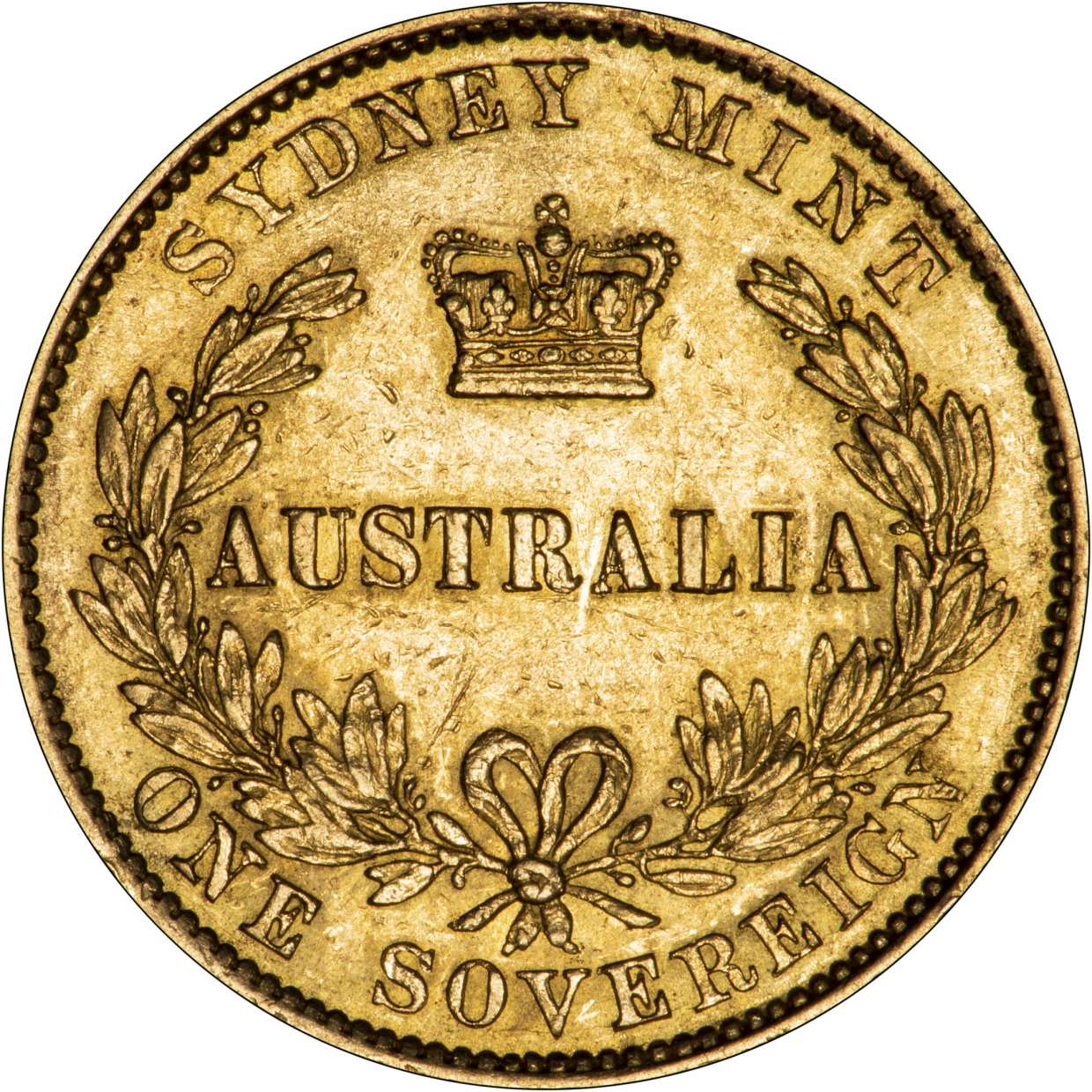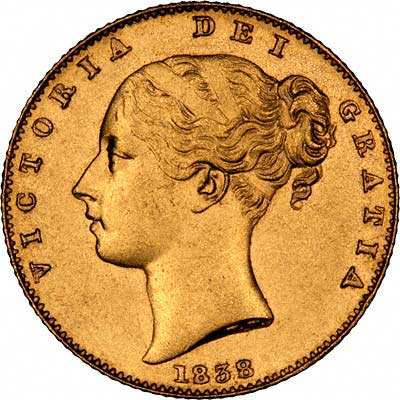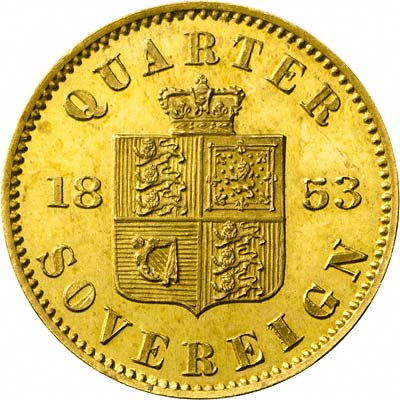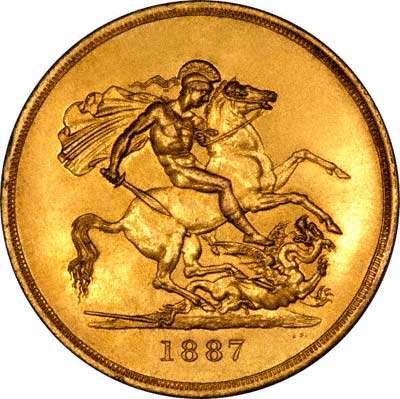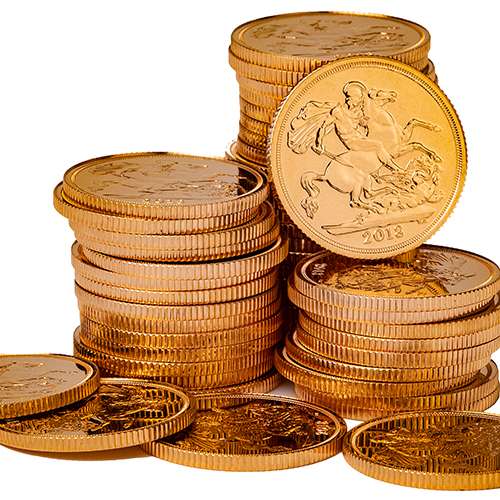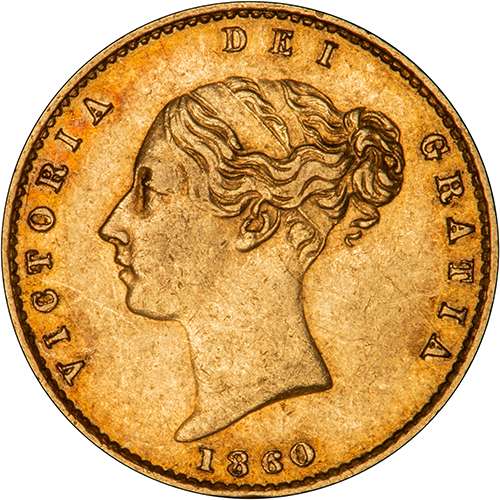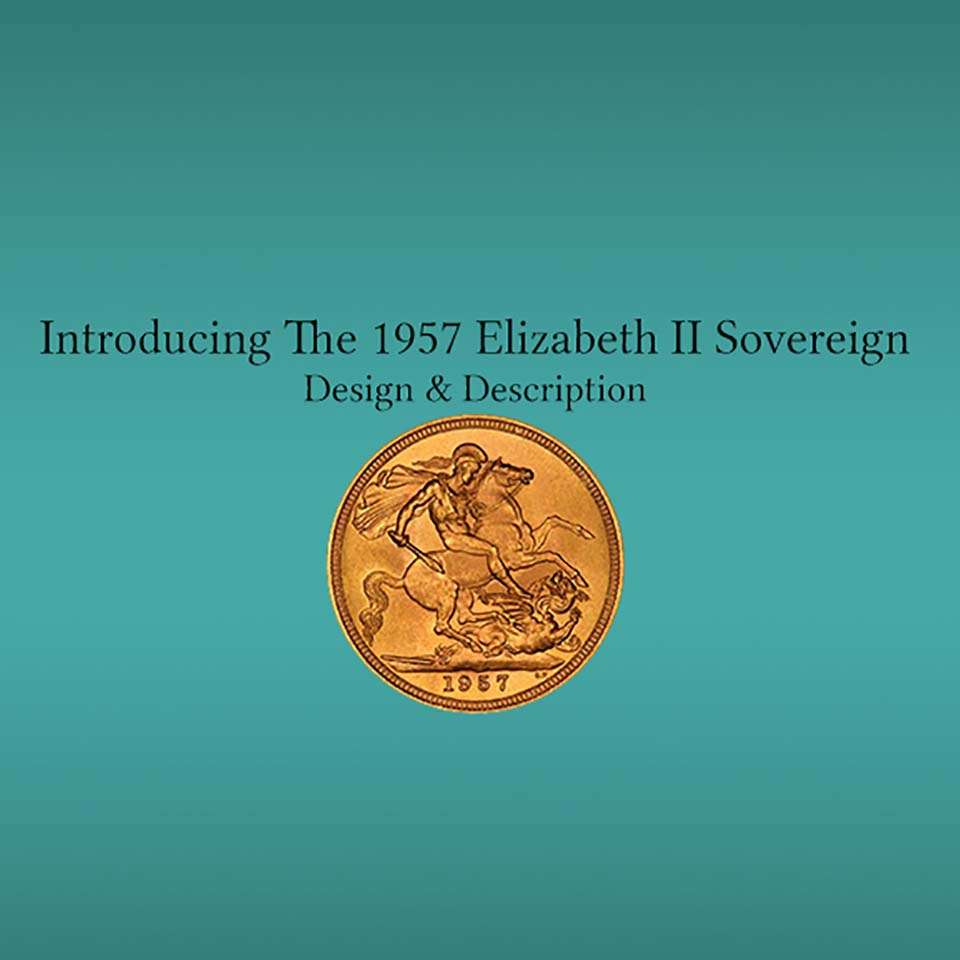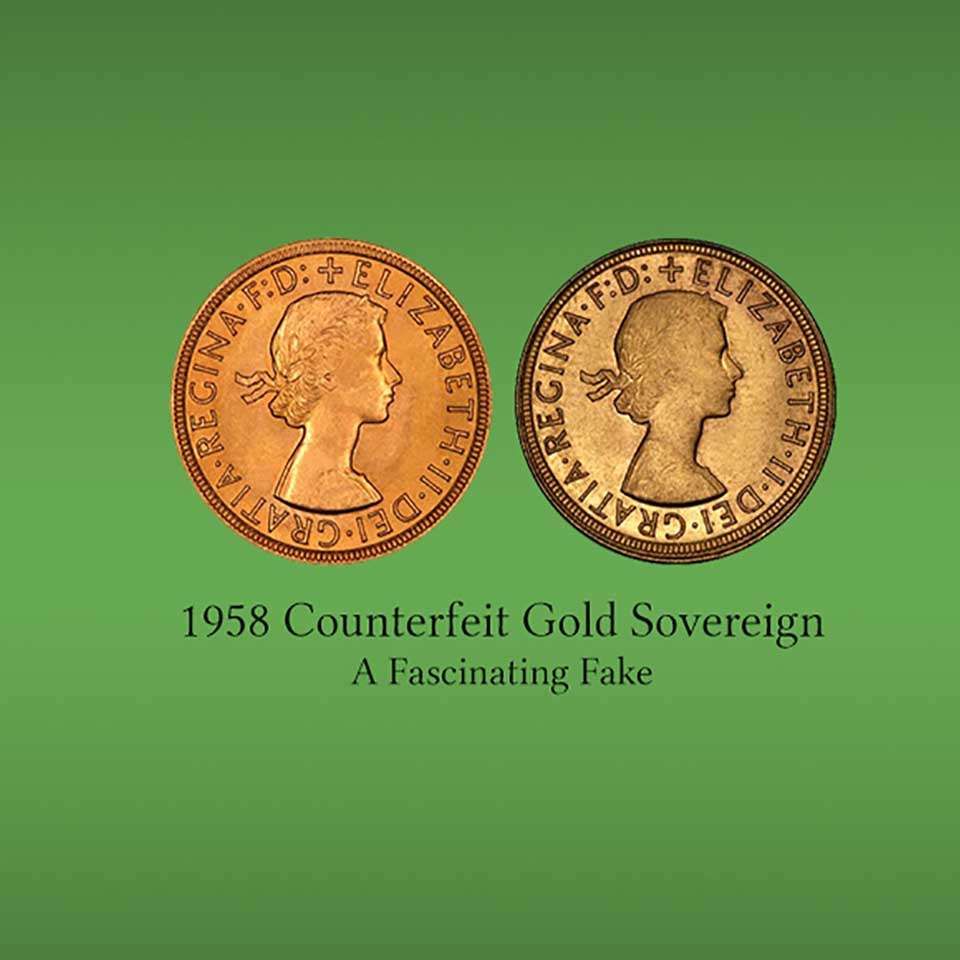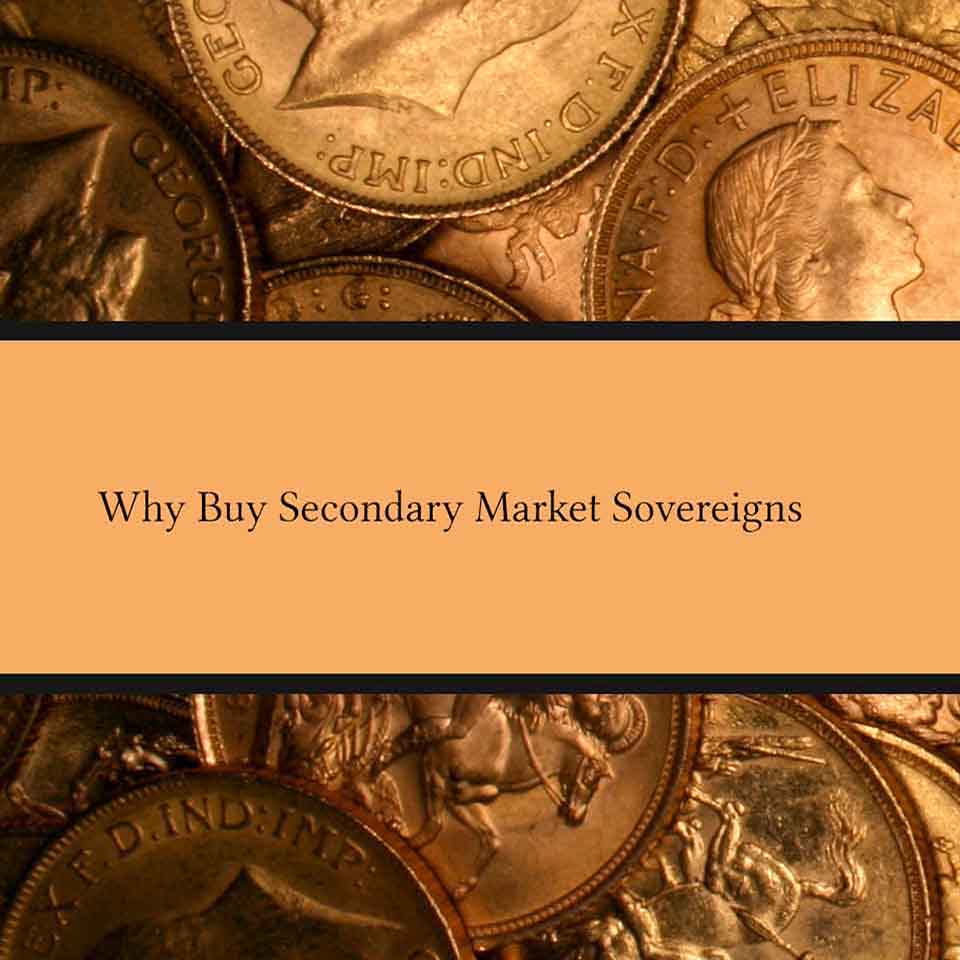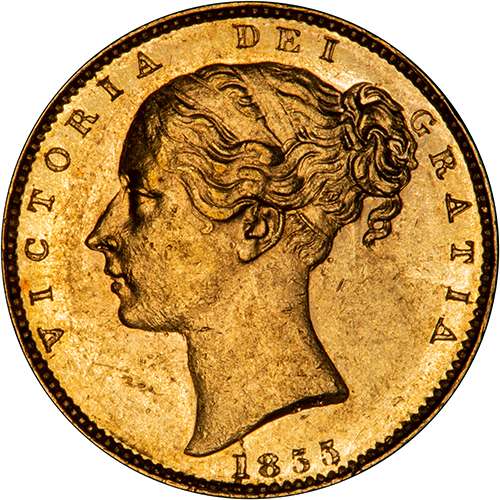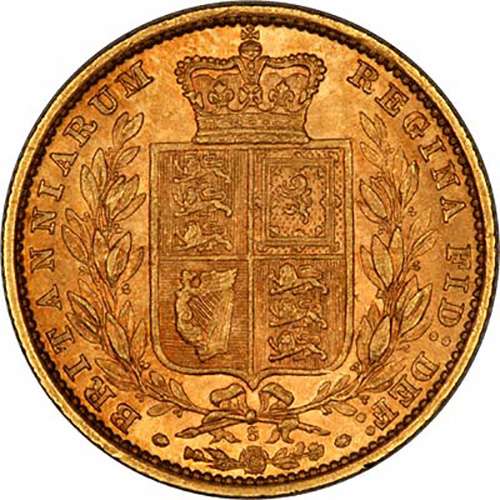Proof, Brilliant Uncirculated or Uncirculated Sovereigns and Other Coins
Synopsis
We are always being asked the difference between proof and uncirculated or bullion sovereigns, and similarly for other coins also. One very brief explanation is that proofs are shinier, but of course this oversimplifies the matter slightly.
Uncirculated
The word "uncirculated" means the coin has not been in circulation. "Ordinary" uncirculated coins often have bagmarks, edge knocks and other small scuffs and imperfections. Uncirculated "specimen" coins issued specially for collectors are often more carefully produced and handled, so they may be better than ordinary coins mass produced for circulation, but may still have some small imperfections.
UNC
The Royal Mint described its year 2000 uncirculated non-proof sovereigns as bullion grade sovereigns, although they are, in fact, considerably better than most ordinary uncirculated coins, but not quite as good as specimens which we describe later. It would be wrong to assume that all "bullion grade" coins are as good as these.
Proof
Proof coins are specially produced to a much higher standard of finish. Originally, proofs were intended as pre-production samples. As a printer would produce a small number of "proof" copies for checking and approval, so a mint would produce proofs for approval by the mintmaster, the monarch, and for other purposes. When coin collecting began to become popular about two centuries ago, a larger number of proofs were sometimes made for sale to collectors.
Higher Standard of Finish
This has developed enormously in the past few decades, and most countries, but not all, produce proof coin and sets every year or on special occasions. Proof is not a grade, but a term for a specially struck coin, produced originally as pre-production samples, now often marketed for collectors. Most proof coins have the raised parts of the design in a matt or sand-blasted finish, while the flat part or background has a highly polished mirror finish. The dies used to strike proofs are usually sand blasted first, and then the flat raised areas of the die, which correspond to the flat background areas of the coin, are then polished to a mirror finish. The blanks from which the coins are struck are also specially prepared and polished prior to striking. Proof coins can be expected to be absolutely perfect without blemishes.
Bullion Sovereigns
For many years, the word bullion as applied to gold sovereigns meant gold sovereigns which were traded wholly or mainly on the basis of their gold bullion value, with little regard for date, design type or grade. Since the British Royal Mint recommenced issuing uncirculated in addition to proof sovereigns in 2000, it has adopted and adapted the word "bullion" to mean ordinary uncirculated coins, i.e. a bullion grade of coin. This now creates confusion, because dealers like ourselves will refer to bullion sovereigns with its original meaning, whereas customers who have seen the Royal Mint's adverts will ask for bullion sovereigns when they intend to ask for this year's uncirculated sovereigns.

What is the Difference Between a Proof and a Brilliant Uncirculated Finish?
Commemorative coins are usually issued to three different finishes; Proof, Brilliant Uncirculated and Uncirculated.
- Proof coins are struck to the finest quality finish. The whole process is closely monitored throughout production by skilled craftsmen. Blanks are fed by hand into the press and the coins are struck up to six times using highly polished dies. During minting, the dies are checked and polished. This ensures that the design is sharp and the details are highly defined. Proof coins take a great deal of time to produce and typically in one hour only 40-50 coins are minted. They are generally issued to a low mintage and are sold at a higher premium. They are often highly sought after by collectors looking to own a superlative example of the coin.
- Brilliant Uncirculated (BU) coins are newly minted coins that have never been in circulation. They are considered to be in better condition than typical 'normal' bullion coins but not as great as proof condition coins. BU coins are created for collectors seeking hand-finished dies to ensure sharper, more pristine images of the coin designs. Collectors can expect to pay higher premiums for these coins from dealers due to their higher condition compared to bullion coins, but the premiums will be lower than those of proof condition coins.
- Proof-like Brilliant Uncirculated coins are struck with polished dies. Although they may look like proof coins, they are not struck to the same finish. The 2017 200 Anniversary Strike on the Day BU sovereign is struck to a proof-like finish which was achieved by the coin being struck three times. Once at 750 tonnes and two further strikes at 800 tonnes.
- Uncirculated coins use dies which have been machine polished. These coins are struck once and are produced in large quantities. Precious metal uncirculated coins are often referred to as bullion**. They are an excellent choice for investors who are looking to buy coins at a low premium above the intrinsic metal value.
Different Proof Finishes
Not all proofs are the same. The most common understanding of proof is that the flat background parts of the coin have a highly polished mirror finish, and the raised parts of the design have a matt finish, giving a higher level of contrast between the two. This is achieved by sand-blasting the die, the hardened steel punch with which the blank coins are struck, to give a matt finish, followed by giving the raised parts of the die a highly polished surface, usually by polishing them with diamond powder. The coin blanks themselves are usually produced to a higher quality of finish before striking.
Proof coins are usually double struck at lower striking speeds, to give a higher and sharper definition. They are usually produced on a special machine, and may be hand, rather than mechanically fed into and extracted from the coining press. They are usually individually inspected, and packaged. A proof coin should provide an excellent specimen, and its quality should approach perfection. Some proof coins are made with an all matt finish, as for example the 1902 Edward VII Coronation proof coins, while others are produced as "reverse proofs", i.e. with the raised parts polished and the background matt.
Matt Finish Proofs & Reverse Proof Finish
Some proof coins may be produced with different finishes. The coronation coin set issued for Edward VII in 1902, for example, is well known for having a totally matt finish. Some mints produce coins with what they describe as a reverse proof finish, i.e. where the background is matt, and the raised design is polished. Although these are still accurately described as proofs, what most coin dealers or collectors would generally understand from the unqualified term proof, is one with a matt finish design on a highly polished field or background.
Fleur-de-Coin
Strictly speaking any coin which is absolutely perfect is referred to as being in F.D.C. condition, an abbreviation of fleur de coin. We reckon this translates as "flower of corner", but then we may be misunderstanding some subtleties of the French language!
Specimen Coins
Specimen is used to describe any coin produced to a particularly high standard of finish. Before 1970, most British proof coin sets were described and issued as specimen sets, despite the fact that they would now be called proofs. In recent years the Royal Mint has started to produce especially good versions of its uncirculated coins which it calls specimens. These are ordinary uncirculated coins which have been handled individually and with greater than normal care, to avoid most, but not all, of the surface blemishes which occur due to bulk handling.
Differences in Production Techniques & Practice
Most proof coins are individually hand-fed as blanks into the stamping press, checked before and after striking, only being handled afterwards with gloves or by their edges, and then individually packaged. The press is usually operated at a lower speed, and the coins are often double or treble struck to ensure a completely sharp impression. Specimen coins are usually produced on a stamping press which has been modified so that the coins feed, after striking, into plastic channels or onto a rubber conveyor. They are usually given a brief visual inspection on both sides before packaging individually. Ordinary coins intended for circulation feed at high speed straight from the stamping press via a hopper into large metal bins or containers.
Our Photographs
We have shown two photographs, both of the reverse side of year 2000 dated sovereigns. The top photo shows a proof coin, the lower photo is of an uncirculated one. It is not easy to photograph coins. The background of both coins looks a very dark chocolate brown, but in real life they are yellow. The contrast between matt and polished surfaces shows up very well on the proof coin and this allows fine details to be seen more easily, whereas on the uncirculated coin, the raised design is also slightly polished, and this results in it being more difficult to distinguish the details of the design from the background.
Which is a Better Buy?
Some collectors only collect proof coins, others only non-proof coins. For the non-collector, it can be difficult to decide which is the better coin to buy. We are often asked for advice when people wish to buy a sovereign as a gift. Our general advice here is that it depends what you think the recipient will wish to do with the coin. For use in jewellery, it is better to use ordinary non-proof coins, as proofs would be spoilt. If the recipient is likely to keep and display the coin in its original box, then a proof one may be better.
Sovereigns in Jewellery
Even "ordinary" sovereigns will become worn and polished by wearing as jewellery, but this cannot be helped. Some people worry that this will detract from their value. While this is true, the same argument could be applied to almost anything. Using and driving a car will cause wear and tear, and will decrease its value, however it would be rather stupid for most people to own a car just to leave it in a garage and never drive it. It's similar with using sovereigns and other coins in jewellery. The important thing is to obtain value by getting the pleasure of ownership.
Investment and Future Value
Normally proof coins will sell for higher prices than non-proof ones, however this does not always apply. Our advice is to buy coins for the pleasure you will obtain by owning them, wearing them, or giving them. If you follow this advice, any future value will be a bonus. Do you have a query about the difference between proof and uncirculated? Get in touch on 01253 343081
Related Blog Articles
This guide and its content is copyright of Chard (1964) Ltd - © Chard (1964) Ltd 2025. All rights reserved. Any redistribution or reproduction of part or all of the contents in any form is prohibited.
We are not financial advisers and we would always recommend that you consult with one prior to making any investment decision.
You can read more about copyright or our advice disclaimer on these links.




